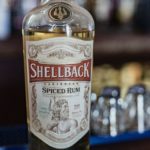In recent years, gin is having a bit of a revolution, with many new brands flooding the market. Last year, more bottles of gin were sold worldwide than any year since 2013. Gin is a spirit enjoyed all around the globe. From Spain to Belgium to the United Kingdom, you can find a bottle of gin in your local bar.
This spirit is renowned in the world of alcohol, known as a classic cocktail component. Gin is recognized for its unique botanical flavor and aroma, which comes from its main ingredient, juniper.
Juniper berries are grown in several regions worldwide, including North America, Europe, and Asia. They can vary in hue, but juniper berries are a deep blue color most of the time. While their taste can be described as tart and piney, their aroma is more spicy and woody.
The Dutch were the first to take full advantage of this distinct berry. Since the 1600s, producers in the Netherlands have been using juniper to create gin. In fact, the word gin is derived from the Dutch word for juniper, which is “genever.” By the end of the century, the city of Amsterdam alone had erected hundreds of distilleries.
Countless recipes have been contrived since then, but juniper has always remained the main ingredient. So how is this spirit made?
The laws of gin
You may have also noticed bottles of gin that have a “distilled” label on the packaging. When a bottle contains this label, the alcohol inside was produced exclusively through original distillation or by re-distillation.
Every type of gin starts out as a neutral spirit, usually made of grain. The drink is made up almost entirely of pure ethanol at this point. The flavors begin to be added when it’s re-distilled. The distillation process from bottle to bottle can differ drastically.
Before we dive into the different production methods of gin, we have to establish a few rules. The world of gin is vast and exceptionally diverse. However, there are some prerequisites that every bottle must meet to be considered gin. First, gin must be distilled from a base like wheat, barley, potato, or grapes.
Botanicals may be added for flavorings, such as herbs, seeds, flowers, plants, or spices. However, the overwhelming flavor of the drink must consist of juniper; otherwise, it cannot be called gin.
In the United States and Europe, gin must be bottled at an ABV of at least 40% (bottled at 80° proof or more. Many other countries follow the same guidelines.
The steeping method
The steep method is considered the most traditional method of producing gin and is still the most commonly used today. Using this method, the ethanol is poured into a pot still (a vessel that holds the liquid and can be heated) mixed with juniper berries and botanicals.
Producers can use all types of botanicals, from lemon peels to whole oranges to cinnamon to nutmeg. The botanicals are allowed to heat for as long as 48 hours. The length of time that they’re steeped in depends on the flavor profile the producer is going for.
Some producers will take them out right away and distill the blend immediately. Once the liquid is distilled, water is added to get the solution down to a low enough bottling standard.
The vapor infusion method
The next most common process of gin distillation is the vapor infusion method. With this method, the ethanol is actually never put into direct contact with the botanicals.
The vapor infusion method requires using a modified pot still called a Carter-head, which has a built-in suspended basket. Producers place the botanicals into this suspended basket, allowing them to fuse into the liquid without actually touching it.
During this process, the ethanol begins to evaporate and rise up, infusing with the botanicals. This action creates a vapor that eventually condenses into a liquid. And ta-da. The gin is distilled.
It is believed that this method of distillation gives the spirit a gentler, softer flavor. One brand that is known for using this method is Bombay Sapphire.
Some brands have developed their own styles of distillation by combining steeping and vapor infusion. One brand that has successfully been able to do this is Hendrick’s Gin, which uses two separate pot stills when distilling; one to steep botanicals for 24 hours, and the other to infuse through vapor.
When both liquids are distilled, they are combined in a final blend of cucumber and rose petal essence.
Alternative gin distillation methods
As the years have passed, more and more brands have started using different methods of distillation. Sometimes, they combine the two classics, and other times, it’s an entirely new method.
Producers today are attempting to push the boundaries of gin, discovering new flavors and producing expressions of the spirit that have never been seen before.
Vacuum distillation
One distillation method that has resulted from this push is the vacuum distillation method. As you might guess, this process happens inside of a vacuum.
The vacuum heats up the ethanol at a considerably lower boiling point than a pot still would, usually cooking at 85 to 95 degrees celsius. Thus, the botanicals are less cooked and more flavorful for the final result.
How gin contrasts with vodka
For some reason, these two spirits always get put in the same category with each other. Yes, both drinks are clear and colorless, but they’re nothing alike when it comes to flavor.
For one, the ingredients they’re made from are different. Vodka can be made with practically anything. It can be made from wheat, rice, corn, barley, rye, grapes, and many other ingredients, and there are pretty much no limits on what kinds of flavorings can be added.
On the other hand, Gin has some more specific requirements for its base, and it must be flavored with juniper. Other botanicals may also be added, but they usually aren’t as wide a range of flavors as with vodka.
Furthermore, the base for vodka is mashed and fermented before it’s distilled, while the base for gin is distilled right away.
In terms of taste, the differences are even starker. Vodka is traditionally neutral and tasteless without flavorings. Gin, on the other hand, carries a distinctive herbal taste.
The takeaway
The production process of gin may seem simple, but it’s constantly evolving and changing every day. It’s as exciting a time as ever for gin lovers, as more expressions of the spirit are hitting the market at a remarkable rate.
Gin is a classic spirit, known as the quintessential ingredient in many cocktails, including the Martini, the Negroni, the Gimlet, and many more. The herbs and spices in gin come to life when fused with other drinks and additives.
For a wide selection of gin delivered straight to your door, check out Saucey. We carry over 400 different types of gin, from Tanqueray to Seagram’s to New Amsterdam.



